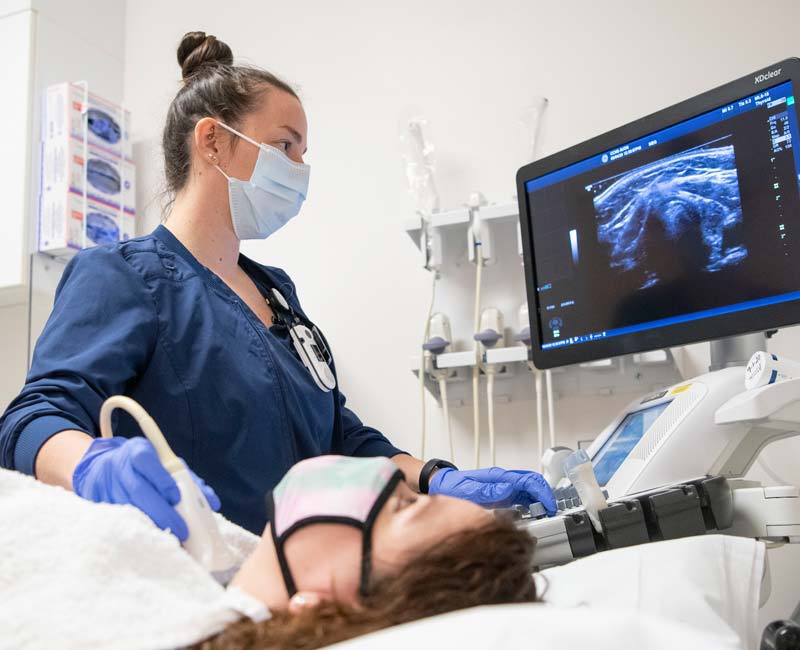Ultrasound
What Is Ultrasound ?
Ultrasound, also known as ultrasonography, is a medical imaging technique that uses high-frequency sound waves to create images of the internal structures of the body. It is a non-invasive and safe method for visualizing various organs and tissues. While ultrasound is a powerful imaging tool, it may not always provide as detailed an image as other modalities like MRI or CT. The choice of imaging technique depends on the specific medical situation and the information needed by the healthcare provider.
- Sound Waves: A small device called a transducer emits high-frequency sound waves into the body. These sound waves are inaudible to the human ear.
- Sound Wave Reflection: The sound waves travel through the body and bounce back (or echo) when they encounter different types of tissues. The transducer picks up these echoes.
- Image Formation: The echoes are then processed by a computer to create real-time images of the internal structures. Different tissues in the body produce varying echoes, which are used to differentiate between them on the ultrasound image.

What Is The Main Cause Of Ultrasound ?
The main cause of ultrasound is the use of high-frequency sound waves to create images of the internal structures of the body. Unlike X-rays or CT scans, which use ionizing radiation, ultrasound imaging relies on the transmission and reflection of sound waves.
- Sound Wave Emission: A small device called a transducer emits high-frequency sound waves into the body. These sound waves are inaudible to the human ear.
- Sound Wave Transmission: The sound waves travel through the body and bounce back (or echo) when they encounter boundaries between different tissues. These boundaries may be between tissues of different densities or between a tissue and a fluid-filled space.
- Echo Detection: The transducer also functions as a receiver, picking up the echoes produced by the sound waves bouncing back.
- Image Formation: The echoes are then processed by a computer to create real-time images of the internal structures. Different tissues in the body produce varying echoes, which are used to differentiate between them on the ultrasound image.
- Since sound waves are used instead of ionizing radiation, ultrasound is considered a safe imaging technique and can be used for various medical purposes, including monitoring pregnancies, evaluating the abdomen and pelvis, visualizing the heart, blood vessels, and other organs.
What Is Treatment ?
Treatment ultrasound, also known as therapeutic ultrasound, involves the use of high-frequency sound waves for medical purposes beyond imaging. Unlike diagnostic ultrasound, which is primarily used to create images of internal structures, treatment ultrasound focuses on using these sound waves to deliver therapeutic benefits to targeted areas of the body. It's important to note that treatment ultrasound is administered by trained healthcare professionals, such as physical therapists, occupational therapists, or other healthcare providers with specialized training in ultrasound therapy. They carefully select the appropriate parameters, including frequency and intensity, based on the specific condition and the desired therapeutic outcome. Overall, treatment ultrasound is a valuable adjunct to a comprehensive treatment plan for various musculoskeletal conditions and injuries. However, it's important to remember that it may not be suitable for all conditions, and the decision to use ultrasound therapy should be made by a qualified healthcare provider based on individual patient needs.
Clinical Services
Facilities
24 Hours Services



